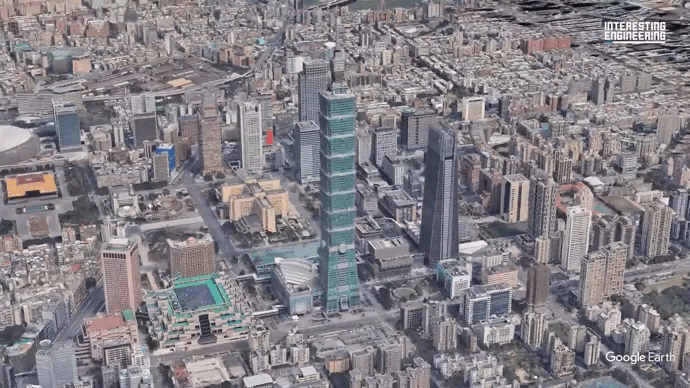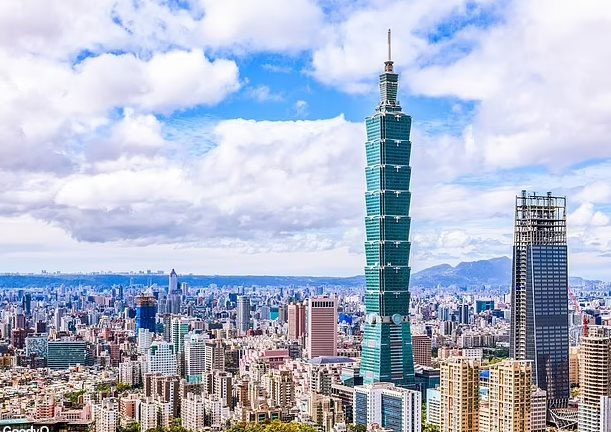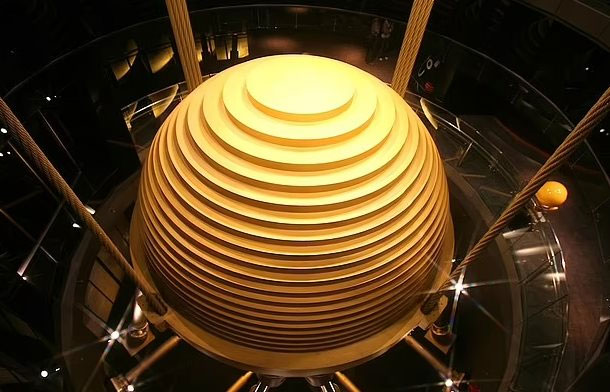How did this building over 500 meters high still 'survive' after the strongest earthquake in 25 years in Taiwan?
Taiwan (China) just had the strongest earthquake in the past 25 years, but there is a building that is 500 meters high and still stands tall "not falling". Why?

At around 7:59 a.m. on April 3, a 7.2 magnitude earthquake shook the entire island of Taiwan, causing many houses to collapse, killing 9 people and injuring more than 1,000 people - as of the morning of April 4. Hourly Vietnam.
The seismic center of the Taipei Weather Administration said the earthquake was the strongest in Taiwan in the past 25 years. However, the earthquake could not affect the tallest building on the island.
Taipei 101 is the tallest building in Taiwan worth 1.8 billion USD, located in Tin Nghia District, Taipei and also held the title of tallest building in the world from 2004-2010.

Taipei 101 Tower.
It is known that with a height of about 509 meters, 101 floors above ground and 5 floors underground - the building is equipped with a preventative measure to help make the building extremely sustainable, reducing the overall vibration by 40% when there is a problem. earthquakes and strong winds. It can even withstand many strong earthquakes.
Specifically, Taipei 101 is equipped with one of the world's largest adjustable mass damping systems. It has a giant yellow steel ball weighing 660 tons - suspended between the 88th and 92nd floors, acting like a pendulum, gently oscillating back and forth to " eliminate" the forces that cause the building to sway. for example wind force.

Taipei 101 is equipped with one of the world's largest adjustable mass damping systems.
The pendulum will swing back and forth depending on the movement of the building, for example if the building moves in one direction, it will swing in the other direction and maintain overall balance.
If wind or earthquake forces push the tower to the right, the ball will exert an instantaneous and equal force to the left, canceling out the original motion. So even though the building sways, it won't fall.

If wind or earthquake forces push the tower to the right, the ball will exert an instantaneous and equal force to the left, canceling out the original motion.
In addition, it is also equipped with a sensor system to help detect the movement of the building - an investment of up to 4 million USD.
A pendulum is an example of a passive damping system , which operates without external control or power - just gravity and the motion of the building. Taipei 101 is also the first skyscraper in the world to use a pendulum for structural damping.
Construction of Taipei 101 began in 1999 and was completed in time for New Year's Eve 2004. Each floor of the building also had steel "support trusses" installed that went from the building's core to the exterior columns. to increase the rigidity of the structure.

Taipei 101 building also has extremely fast elevators, with a maximum speed of 60.6km/h.
Publicizing its adjustable mass damping system has helped the building become a tourist attraction.
Furthermore, the ability to deal with the forces of nature is not the only impressive feature of Taipei 101. The building also has extremely fast elevators, with a maximum speed of 60.6km/h - helping visitors You can go from the ground floor to the observatory in just 37 seconds.
Taiwan (China) is an earthquake-prone area because it is located on the Pacific 'ring of fire', where pieces of the Earth's crust collide, causing frequent seismic and volcanic activity.
However, according to Stephen Gao, seismologist and professor at Missouri University of Science and Technology, Taiwan's earthquake preparedness is 'the most advanced in the world' .
- Houses crumbling after the earthquake in Taiwan
- 6.1 Richter earthquake rocked Taiwan
- 4 Vietnamese were stranded in houses collapsed due to the Taiwan earthquake
- The world has a new 'roof'
- The magnitude 6.3 earthquake in Taiwan
- Taiwan is shaken by an earthquake of 6 degrees
- Taiwan shook by the earthquake
- Taiwan shakes because of 6.7 Richter earthquake
- Strong earthquake shakes Taiwan
- Houses tilted and mountains collapsed during the Taiwan earthquake
- 2 people died, 200 were injured after the quake shook Taiwan
- Hanoi Building shook because of the continuous earthquake in Son La
 'Fine laughs' - Scary and painful torture in ancient times
'Fine laughs' - Scary and painful torture in ancient times The sequence of numbers 142857 of the Egyptian pyramids is known as the strangest number in the world - Why?
The sequence of numbers 142857 of the Egyptian pyramids is known as the strangest number in the world - Why? History of the iron
History of the iron What is alum?
What is alum?